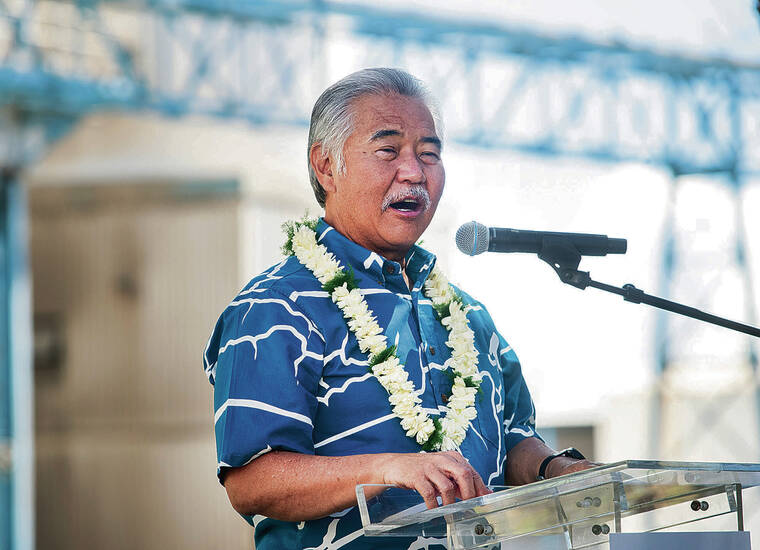Gov. David Ige said Wednesday that the $350 million the state Legislature provided during the 2022 session is enough money to build a new Aloha Stadium.
Where? Halawa, as specified by lawmakers.
When? That is still anyone’s guess.
“We’re committed to complete construction at the site as quickly as possible,” Ige said during an appearance Wednesday on the Honolulu Star-Advertiser’s “Spotlight Hawaii” livestream program. “Private financing is no longer necessary.”
Ige, who completes his second and final term as governor in December, said a new plan will be unveiled “in about three weeks or sooner.”
Aloha Stadium manager Ryan Andrews said he was glad to hear the governor say he is committed to building a new stadium.
“I appreciate that because I had not heard that before. Knowing he’s doing it makes me very happy,” Andrews said. “But I can’t really comment on anything else, because he really didn’t share what the direction is.”
Ige did not say if the new plan would mean more or less time would be needed to build the stadium, or how much revision to requirements already put in place is needed.
The most recent estimate from state planners is that the new stadium would be ready for the 2027 University of Hawaii football season.
Ige said the new plan will focus on the stadium itself.
“We anticipate just simplifying the project so we can accelerate it as quickly as possible,” he said.
Chris Kinimaka, public works administrator for the state Department of Accounting and General Services, said it is a misconception that working only on a stadium, and not also an accompanying entertainment district, would mean faster construction of the stadium.
“These are two independent actions that can run simultaneously without slowing each other down,” Kinimaka said.
Ige said there would be some aspects of private investment, but it would not include much of what has been worked on for several years by New Aloha Stadium Entertainment District planners.
“We do anticipate a public-private partnership, but it will be structured very differently than the (request for proposals) that was being worked on by DAGS,” Ige said. “I do think the concept of an entertainment district makes sense.”
DAGS was the state agency handling the planning and financing for replacing the old Aloha Stadium, which opened in 1975 and was closed in late 2020 for safety reasons.
Responsibility for the stadium was transferred to the Department of Business, Economic Development and Tourism during the last legislative session. Last week, state comptroller Curt Otaguro received an email from Ige’s chief of staff, Linda Chu Takayama, instructing DAGS to stop work on the request for proposals.
Three groups of builders have been chosen as preferred bidders for the stadium and two for the entertainment district, and were expected to submit proposals for the jobs.
The plan links the new stadium to neighboring state-owned real estate. Development would be diverse and include restaurants and shops. Partly because of the area’s proximity to Pearl Harbor, the entertainment district would attract visitor spending, which would help offset the public cost of the stadium and provide for stadium maintenance, proponents say.
A consultant on the New Aloha Stadium Entertainment District added that the public-private plan in place also would result in a higher-quality multiuse facility for sports and other events.
“(It’s) a plan that will give the best stadium, the best district,” said David Harris of Crawford Architects.
Ige said he approved the environmental impact statement for the project.
Kinimaka said it might not be easy to revise the EIS for projects that don’t include components similar to what the New Aloha Stadium Entertainment District has planned.




